How To Make Valentine’s Day Fizzy Heart Ice Cubes
Get ready for Valentine’s Day fun with these colorful, taste-safe, fizzy heart ice cubes! A fun twist on the classic baking soda and vinegar science experiments.
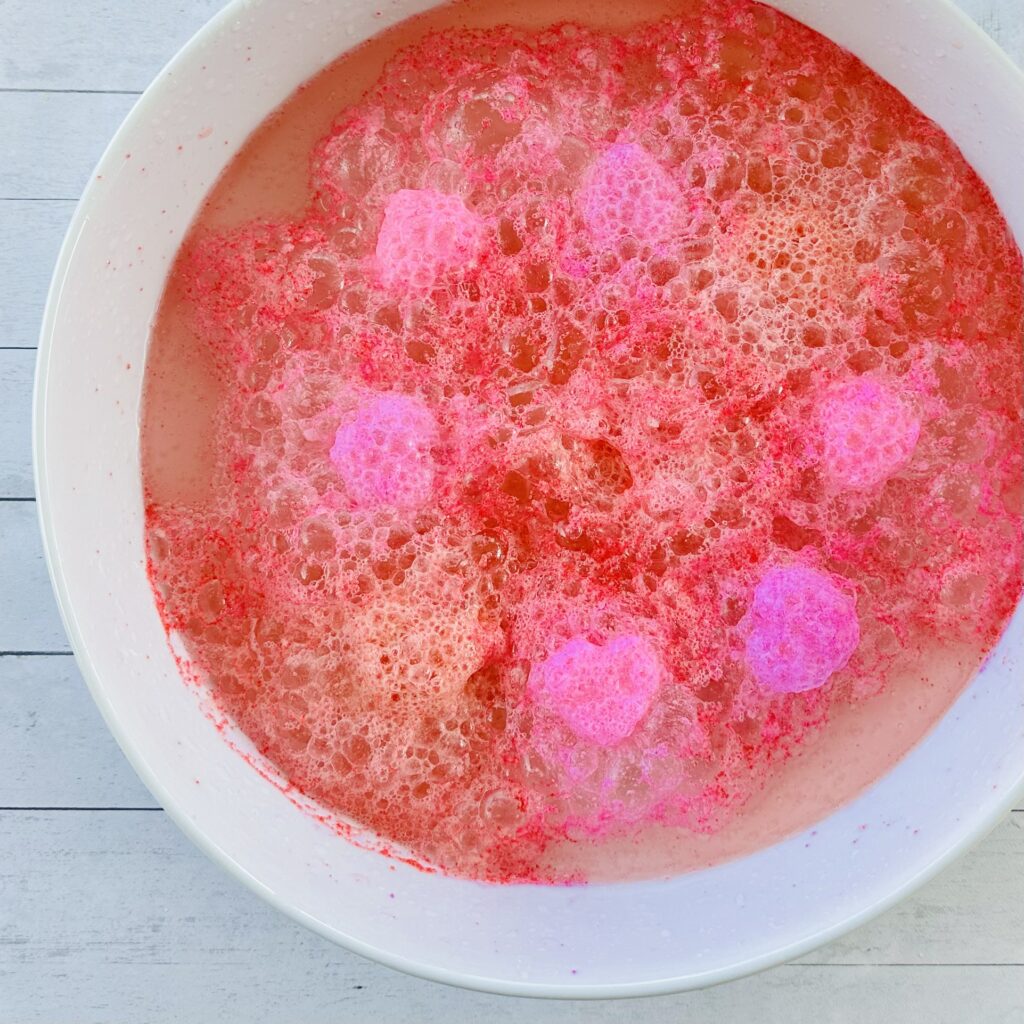
Always supervise children during sensory play. See full disclaimer here. This post may contain affiliate links, which means I may earn a small commission if you make a purchase through these links, at no extra cost to you. As an Amazon Associate, I earn from qualifying purchases. I only recommend products I personally use and love! You can read more about my disclosure policy here.
Looking for a super fun way to keep the kids entertained this Valentine’s Day while sneaking in a little sensory play and science? Fizzy heart ice cubes are the answer!
This experiment is a Valentine’s Day twist on the classic baking soda and vinegar reaction, but with a kid-friendly upgrade: frozen heart-shaped cubes that fizz for longer and make for a hands-on sensory experience.
Even better? They’re taste-safe, so it’s perfect for younger kids who might be tempted to give things a taste test!
What Are Fizzy Heart Ice Cubes?
Think of them as little magic science hearts! They’re simple to make with baking soda, water, gelatin (optional), and food coloring—just freeze them in a heart-shaped ice cube tray and let the Valentine’s Day science begin.
When you add vinegar, the frozen baking soda starts fizzing, creating an eruption of bubbles and color. The longer-lasting effect of frozen baking soda and gelatin keeps the fun going far beyond the quick pop of a regular baking soda volcano.
Why Kids Love It
There’s something mesmerizing about watching these colorful, heart-shaped cubes bubble and fizz! You can bring out droppers, measuring spoons, cups, or any tiny tools for kids to experiment with. Kids get to test, try different tools, and observe the rainbow of fizzing fun up close!
My little ones loved seeing the colorful hearts and bubbles, while my older kiddo enjoyed seeing how smashing the cubes affected the fizzy reaction. It’s play-based learning at its finest and doubles as a festive Valentine’s Day activity!
How To Make Fizzy Heart Ice Cubes
This recipe is a Ventine’s Day twist on our Fizzy Ice Cubes recipe, which is a hit all year round.
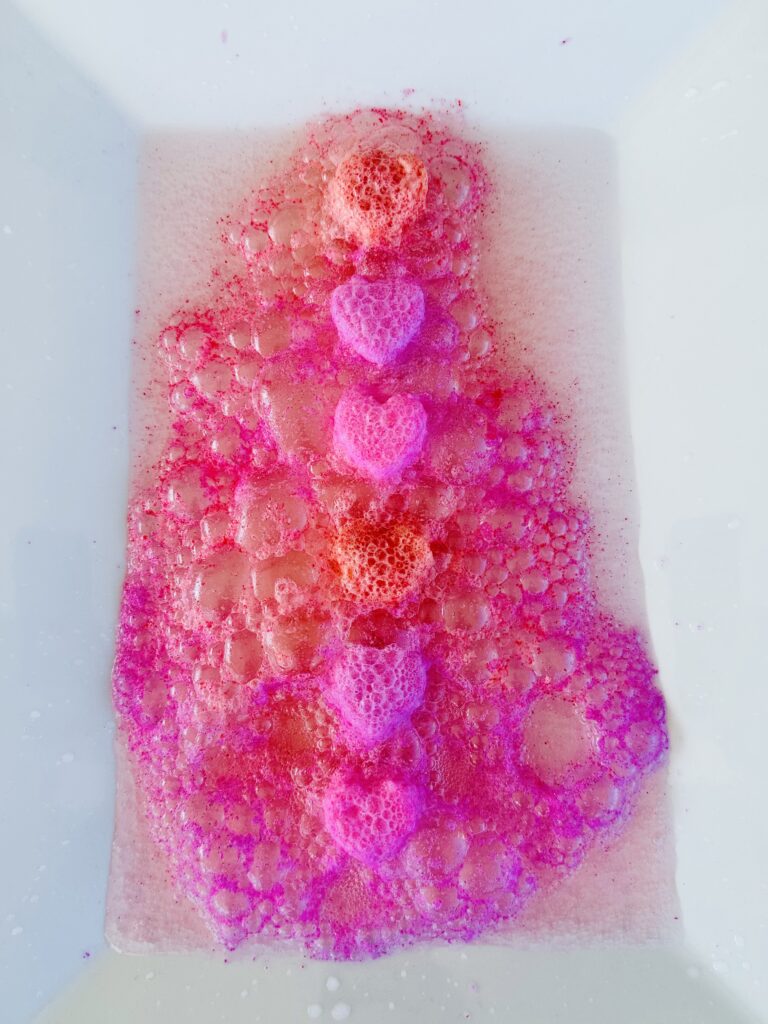
What You’ll Need
- 1 cup baking soda
- 1/4 cup water
- 1 teaspoon clear gelatin powder (optional but recommended)
- Food coloring (optional, but the colors make it more fun)
- Vinegar
- Ice cube tray
- Droppers, measuring spoons, or any tiny tools for fine motor fun!
- Sensory Bin or baking dish
Instructions
1. Mix Your Ingredients
Start by combining the 1 cup baking soda and 1 teaspoon gelatin powder in a bowl. The gelatin adds a slight texture to the cubes, making them a little firmer and longer-lasting once frozen.
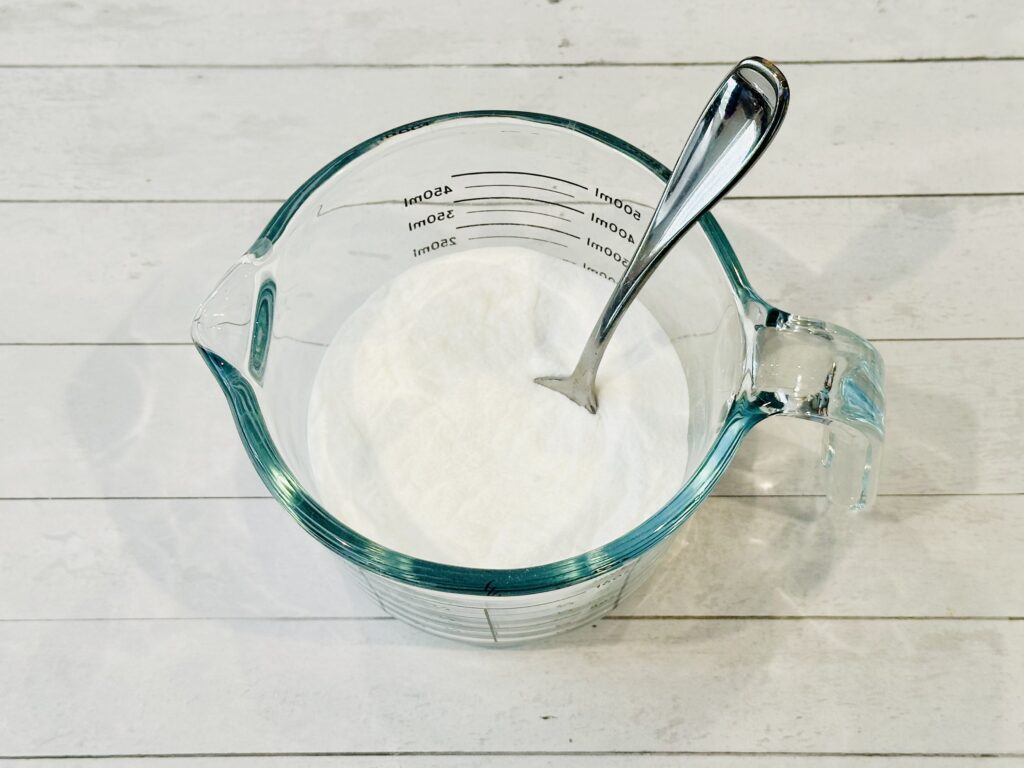
2. Add Some Color
In a separate small bowl, add several drops of food coloring to the 1/4 cup water. Don’t be shy with the food coloring. The more you add, the more vibrant the reation will be.
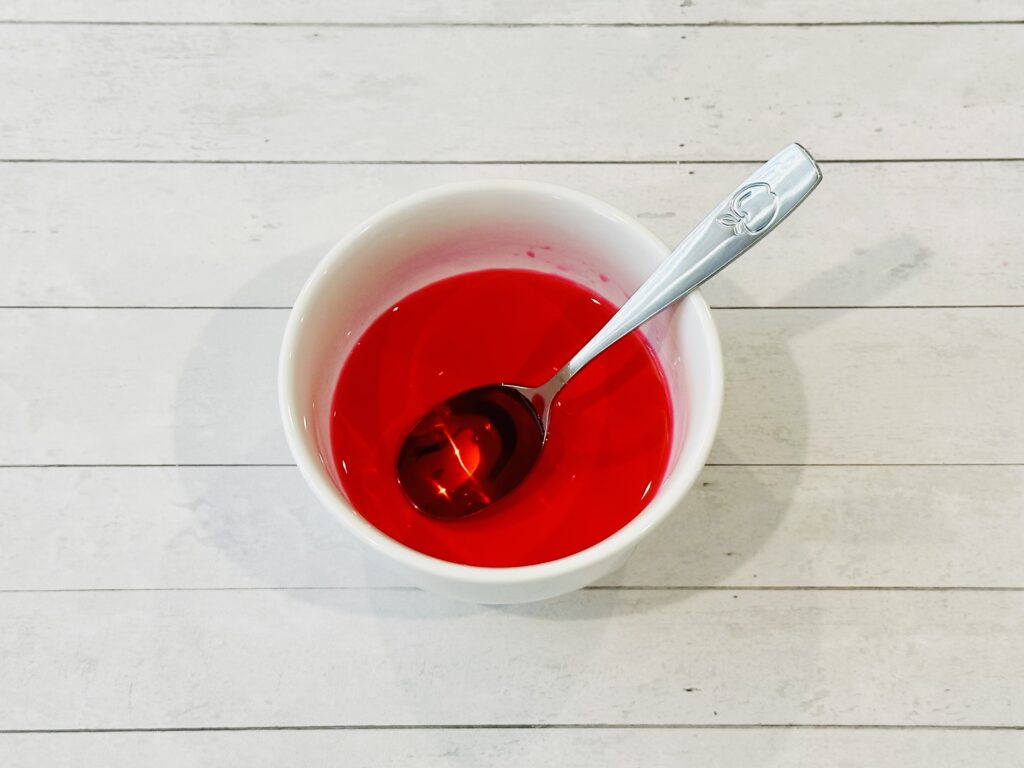
3. Combine and Pour
Slowly pour the colored water into the baking soda and gelatin mix. Stir it up until everything’s evenly combined and there are no clumps. The mixture will have a very thick consistency.
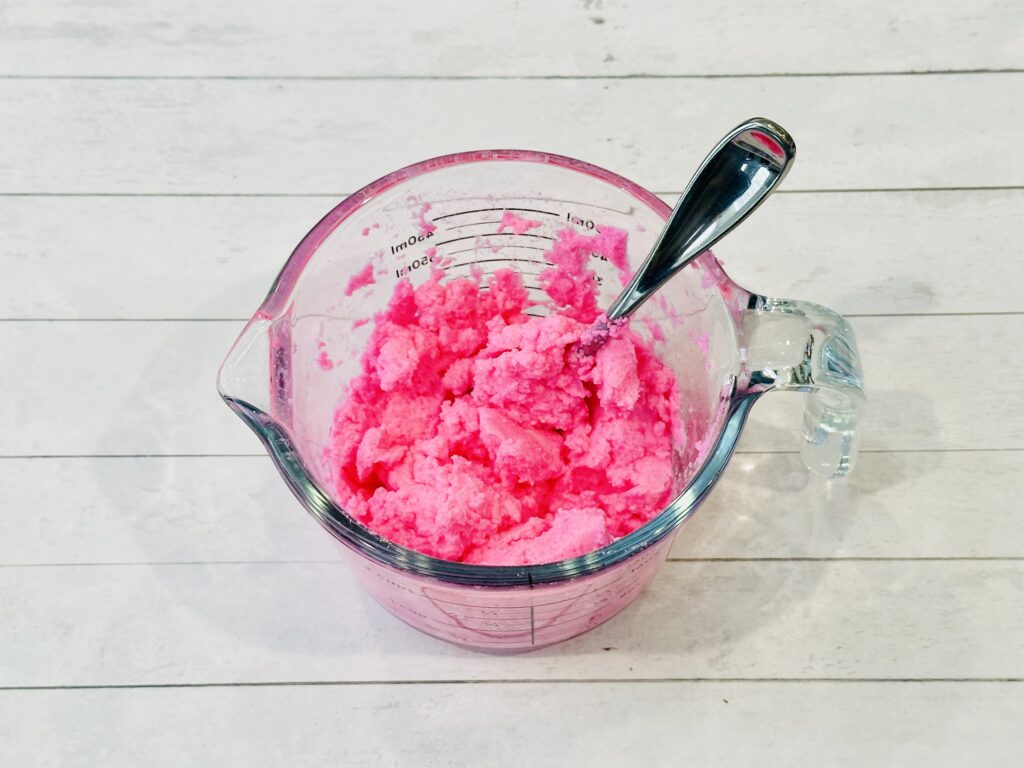
4. Freeze
Spoon the mixture into an ice cube tray, filling each section. Pop the tray into the freezer and let it freeze overnight.
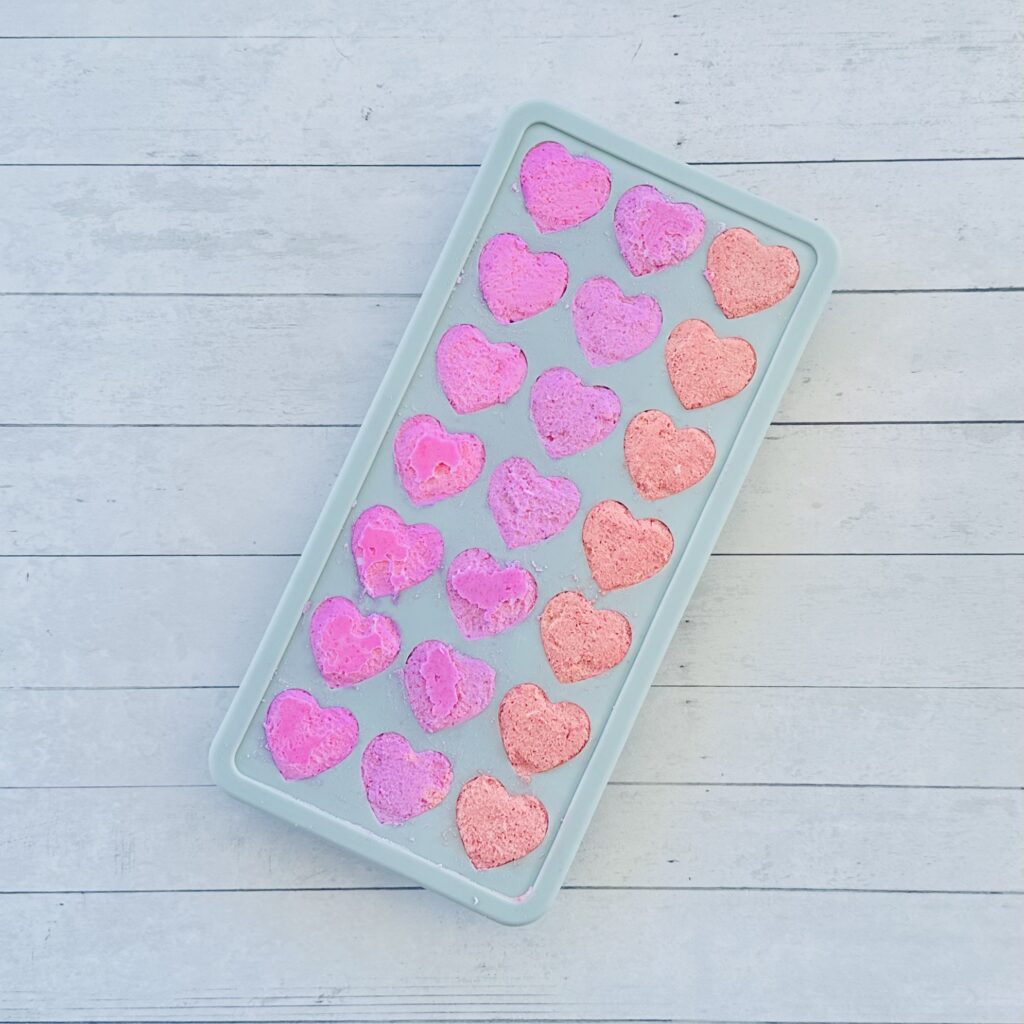
5. Fizzy Fun Time
Once the cubes are frozen solid, pop them out and set them up on a sensory bin or baking dish. Hand the kids droppers, measuring spoons, or small cups with vinegar, and watch the magic happen as they pour vinegar over the cubes!
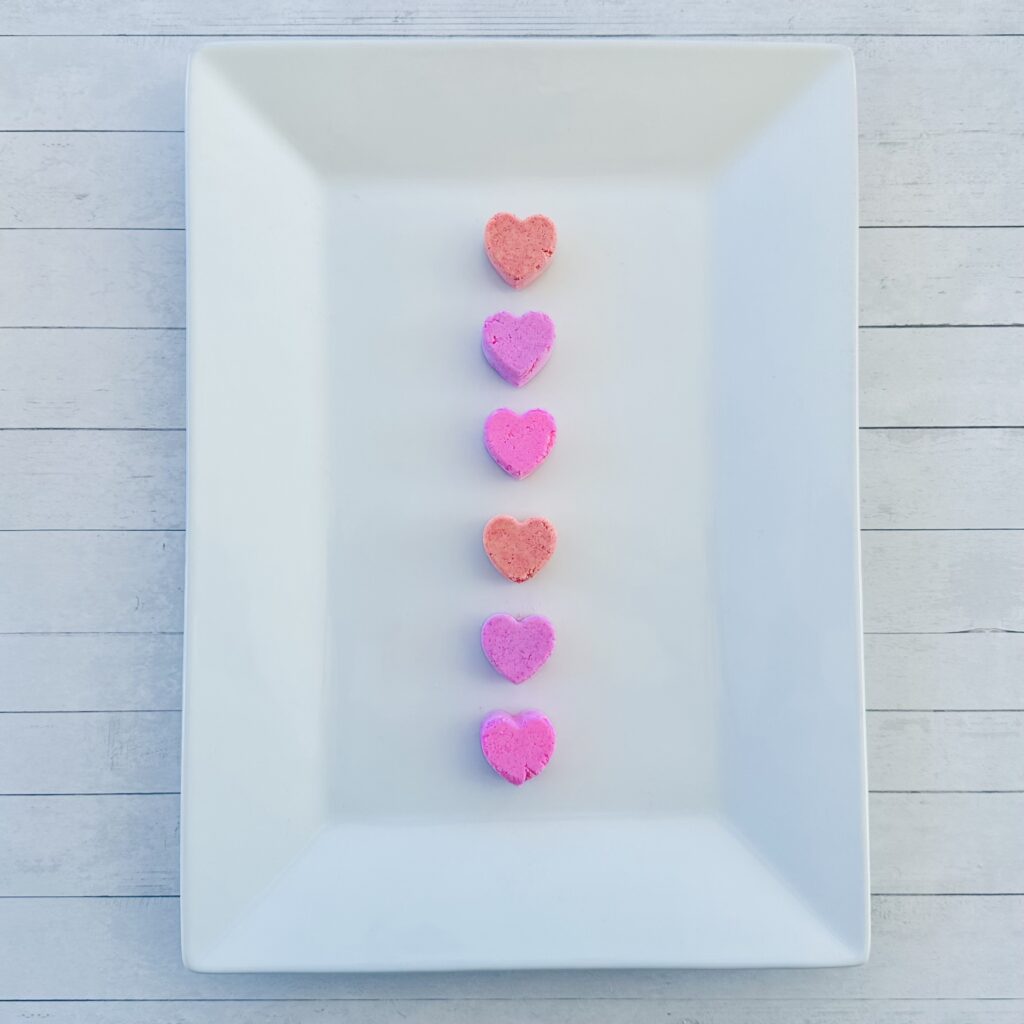
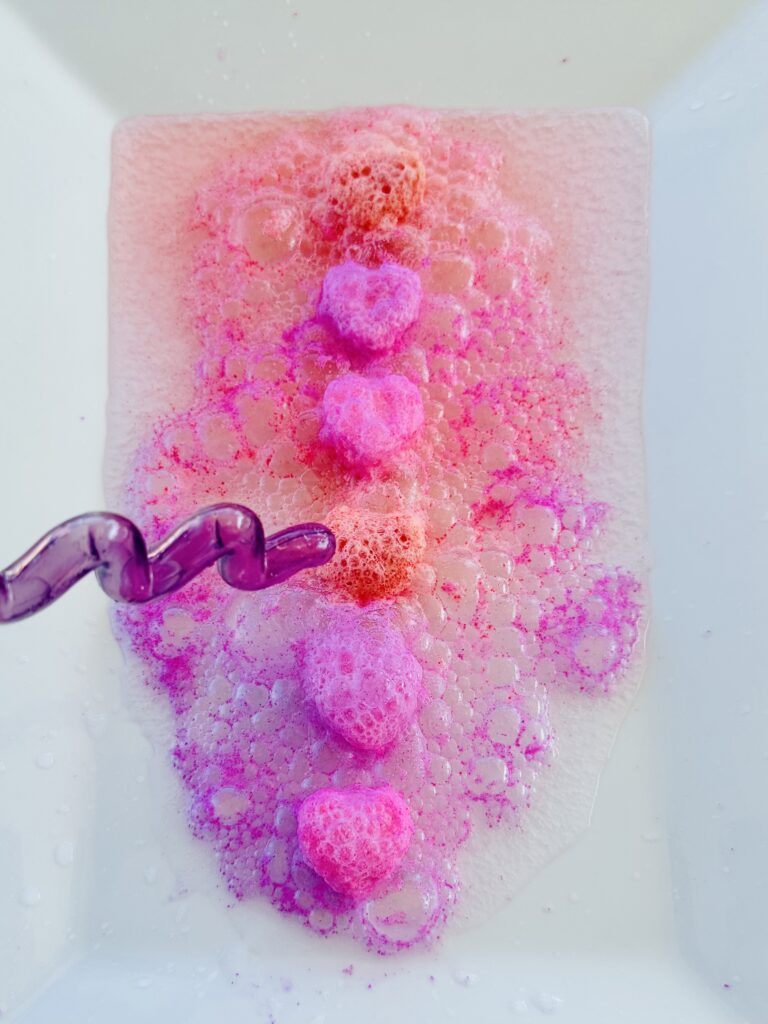
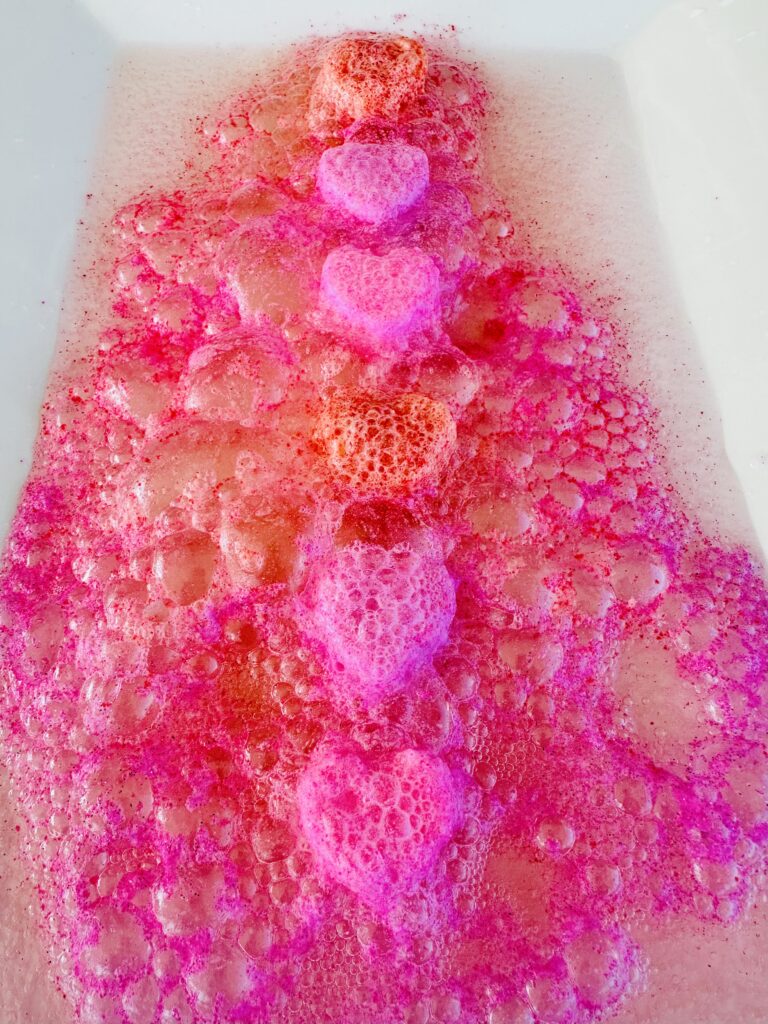
Tips for Extra Fizzy Fun
- Give your kids different tools. Try droppers, measuring spoons, cups, or even turkey basters for them to play with the reaction. This helps practice fine motor skills, and they’ll have a blast finding out which tools create the biggest fizz!
- Add extra food coloring for even more vibrant reactions. For Valentine’s Day, mix and match shades of red, pink, and purple for a festive rainbow effect.
- Try layering the colors for a striped or ombré heart look. Pour in one color, let it partially freeze, then add the next layer.
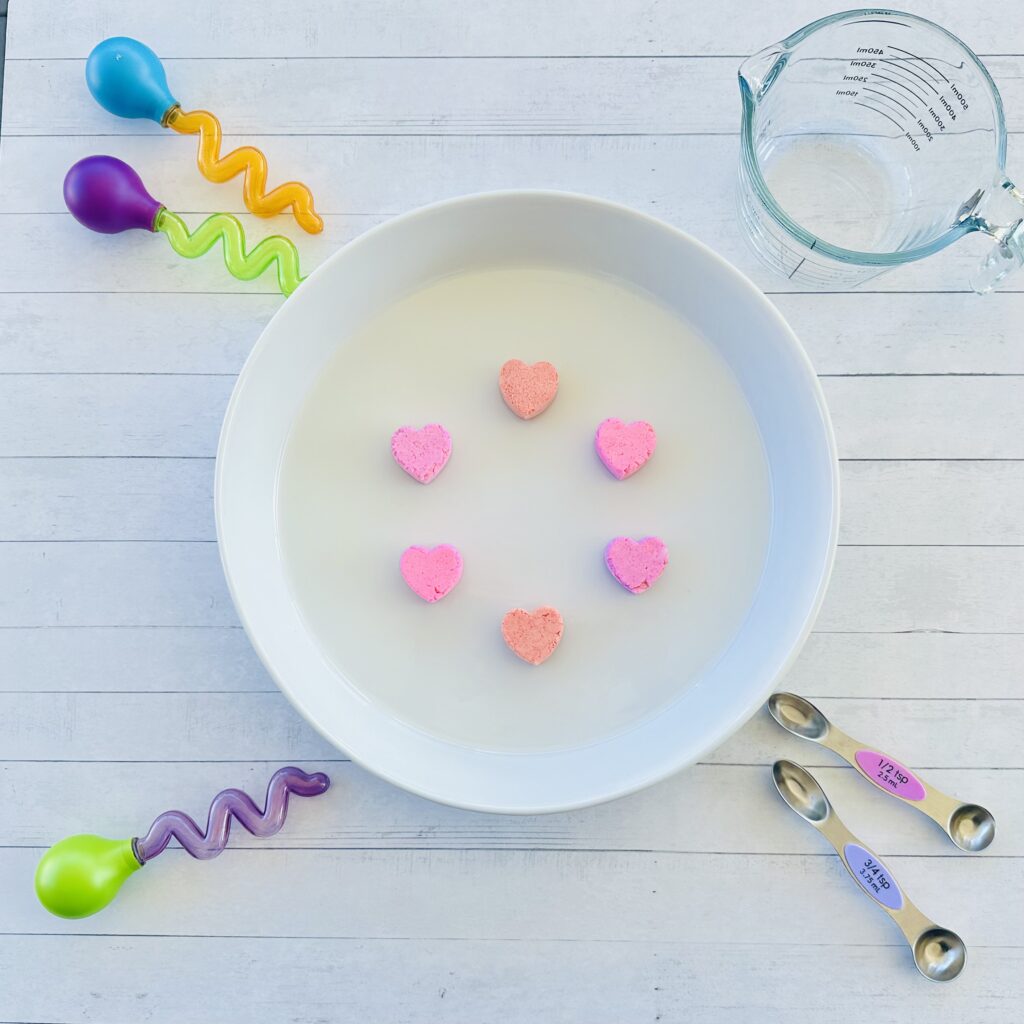
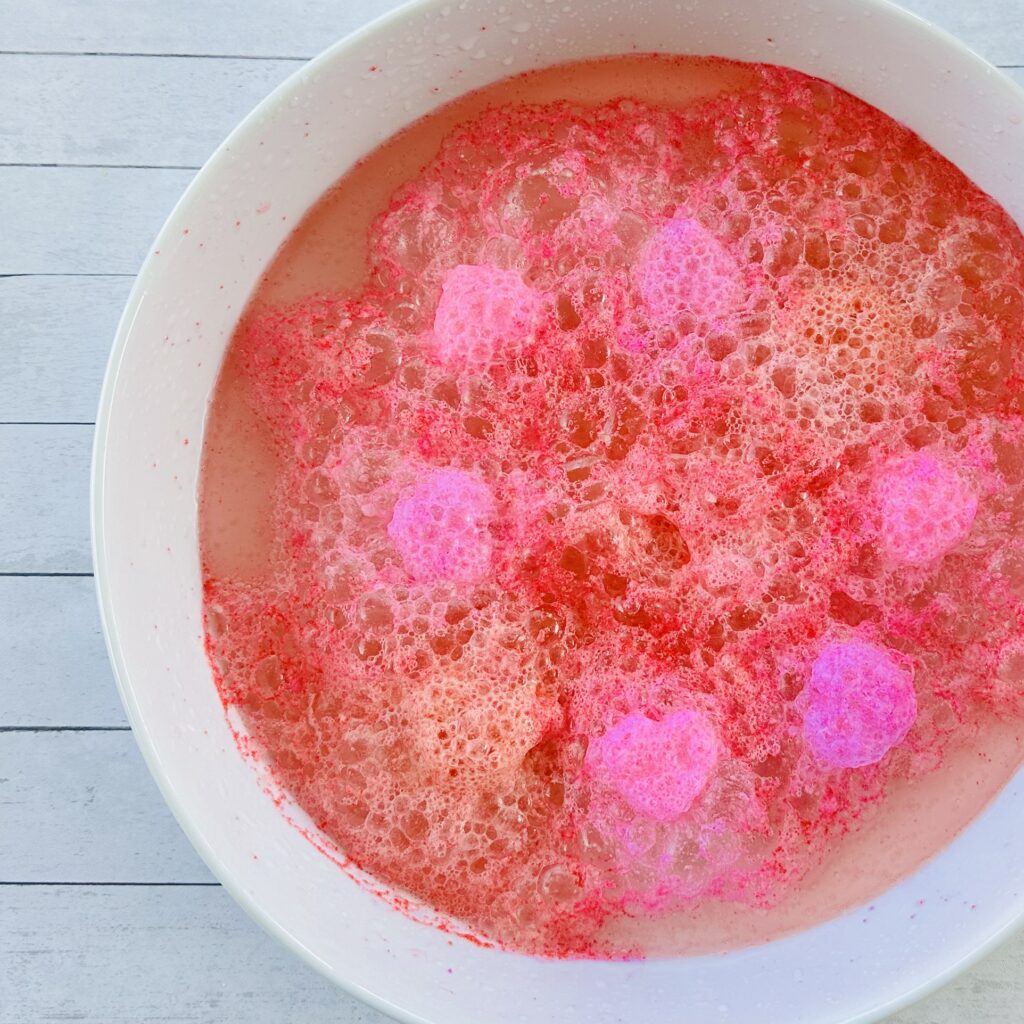
Why Fizzy Heart Ice Cubes Make Amazing Sensory Play
Fizzy heart ice cubes aren’t just a science experiment—they’re a full-on sensory experience! Sensory play is all about engaging kids’ senses, and these fizzy hearts deliver in a big way.
As they watch the vibrant colors, feel the coldness of the ice, and hear the fizzing bubbles, all their senses are activated. Plus, using droppers, measuring spoons, or small cups to pour vinegar onto the cubes helps kids practice their fine motor skills.
The Science Behind the Fizz
So, why does it fizz? It’s all thanks to a chemical reaction between the baking soda (a base) and vinegar (an acid), which produces bubbles (aka carbon dioxide gas).
Plus, as the cubes melt, you can talk about changes of state—from solid to liquid—making this a perfect introduction to science concepts like reactions, gases, and the physical changes that occur when things freeze or melt.
Final Thoughts
Whether it’s a Valentine’s Day party, a rainy day, or you just need something festive to keep the kids occupied, fizzy heart ice cubes are a lifesaver. It’s easy, mess-free (just keep it contained in a sensory bin!), and science-based, making it a winner for parents and kids alike.
Give it a try and let the fizzing hearts bring a little extra love to your day! Let me know how it turns out in the comments.
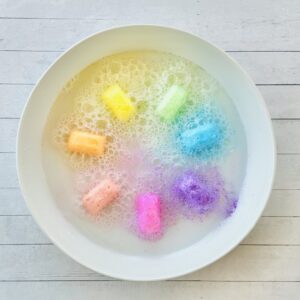
Fizzy Ice Cubes
Equipment
- 1 Mixing Bowl
- 1 Mixing Spoon
- Measuring Cups
- Measuring Spoons
- Ice Cube Tray(s)
- Droppers
- Sensory bin or baking dish
Ingredients
- 1 cup baking soda
- 1 tsp clear gelatin powder optional
- ¼ cup water
- Food coloring optional
- Vinegar
Instructions
- Combine 1 cup baking soda and 1 tsp gelatin powder in a bowl.
- In a seperate bowl, mix food coloring with the ¼ cup water.
- Add the colored water to the baking soda and gelatin powder mix and stir.
- Spoon the mixture into an ice cube tray and freeze.
- Repeat for as many colors as you would like.
- Place frozen fizzy ice cubes in a bin or dish.
- Use the droppers to add vinegar to the ice blocks for fizzy fun!
Recommended
- How To Make 2-Ingredient Edible Valentine’s Day Play Dough
- How To Make Make Glitter & Hearts Valentine’s Day Slime
- How To Create The BEST Valentine’s Day Jello Sensory Bin
- How To Make A Valentine’s Day Colored Rice Sensory Bin
- How To Make 2-Ingredient Edible Valentine’s Day Moon Dough
- How To Make Valentine’s Day Chickpea Sensory Foam
- How To Make Valentine’s Day Fluffy Slime
- Exciting Valentine’s Day Sensory Activities
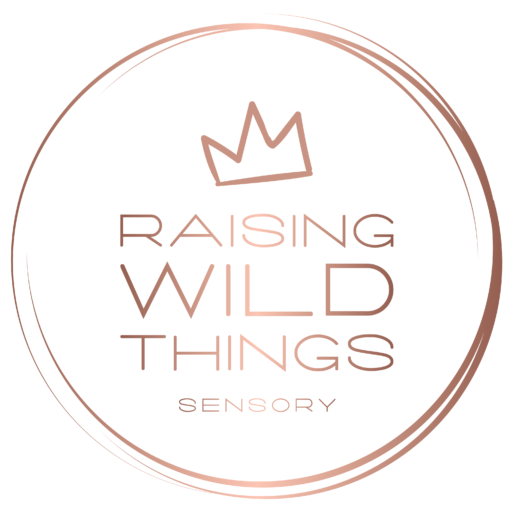

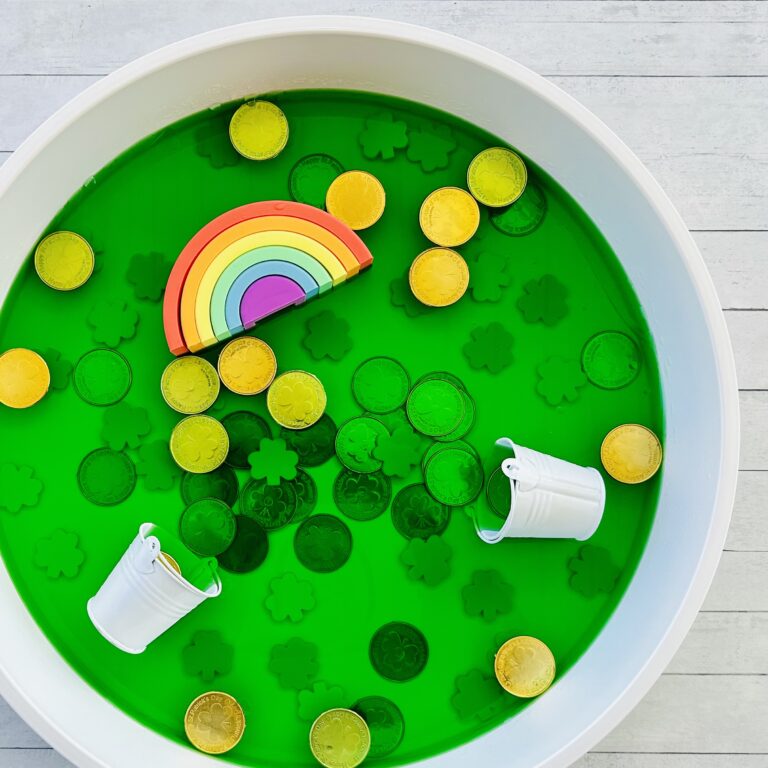
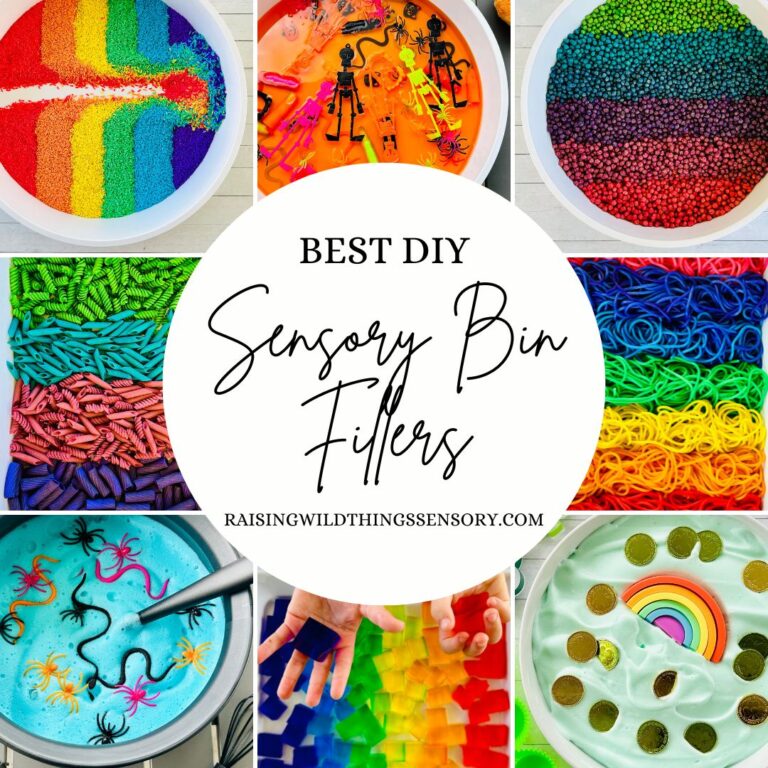
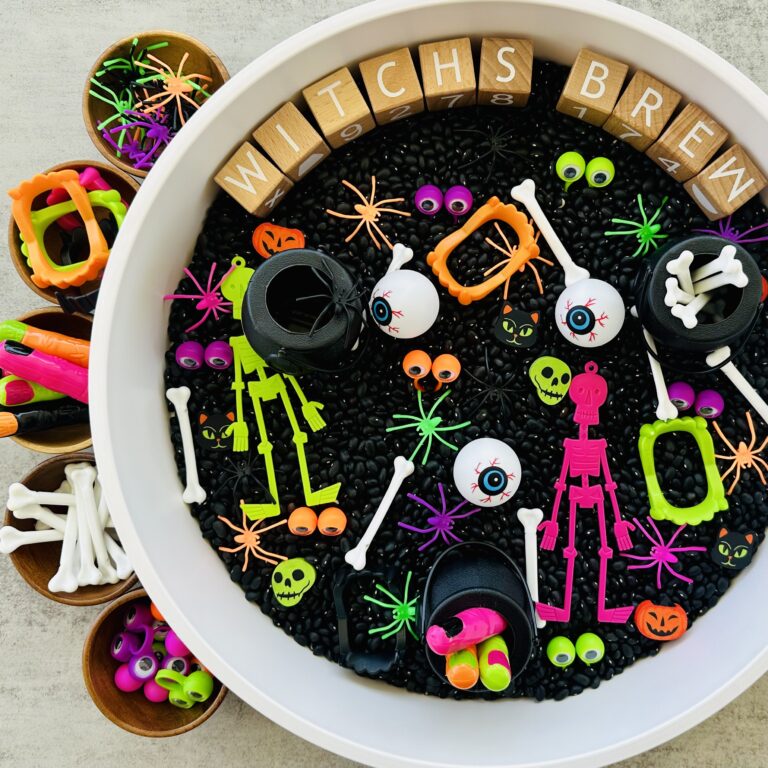
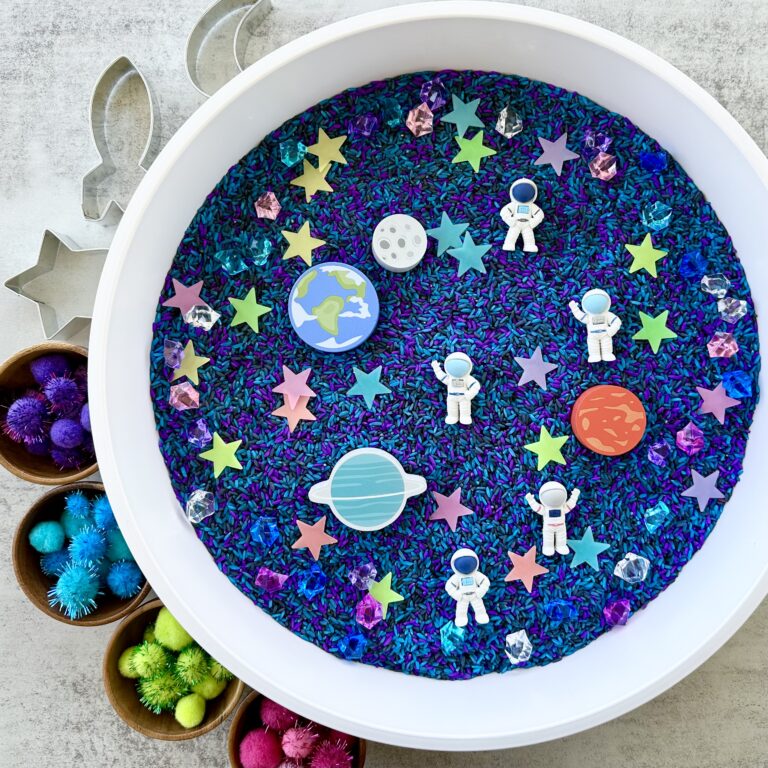

One Comment
Comments are closed.